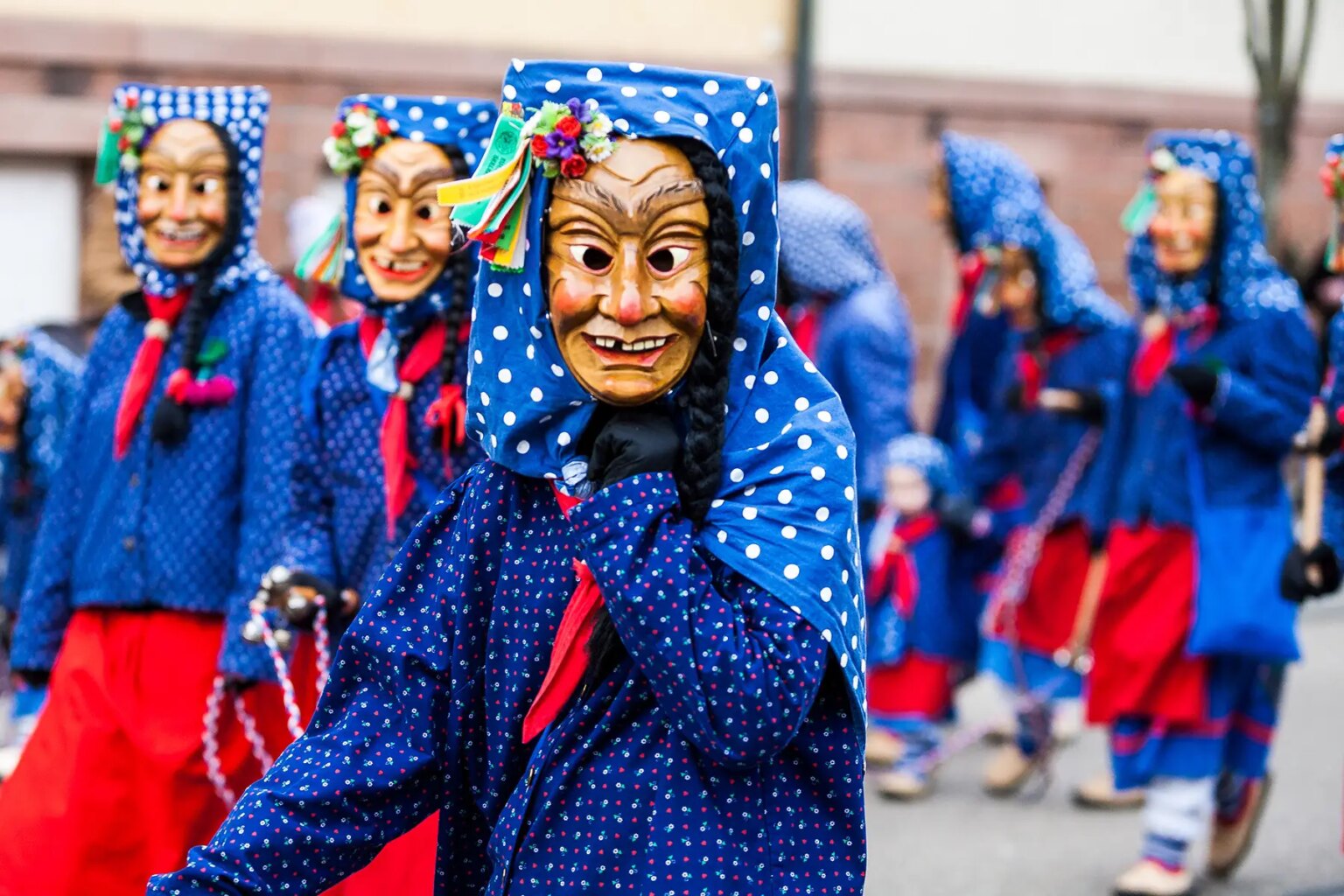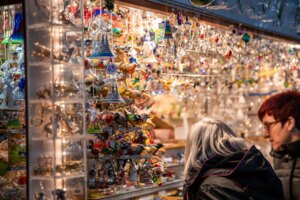In February you can start to feel Swiss carnival fever roll across the country. Carnival in Switzerland is a license for the normally well-behaved Swiss to let their hair down.
The Swiss carnival season, also known as Fasnacht in Switzerland’s German-speaking areas, is when chaos and merriment reign. The tradition has varying oral origins: as an old Germanic sacrificial practice, a time to let loose before the penitential period of Lent, a festival to drive away demons, and a celebration marking the end of winter.
Switzerland’s carnival season traditionally begins on Dirty Thursday, the Thursday before Lent. Several cities break away from tradition by celebrating as late as May; Basel Fasnacht, for example, is the week after Ash Wednesday. Lent typically starts 40 days before Easter, so the dates change each year. In 2017, the height of Swiss carnival runs the week before Ash Wednesday (23–28 February) and the week after (3–6 March).
Here are some of the best and biggest places to dive into carnival in Switzerland in 2017.
Fasnacht Basel
Fasnacht Basel is the largest and most famous carnival in Switzerland. Breaking from tradition, Basel carnival is on the Monday following Ash Wednesday, occurring over the locally-coined three finest days. Basel Fasnächtlers dress head to toe in costumes to completely hide their identities. Members of cliques — bands playing piccolos and basler drums — wear themed garbs to parade around Basel Fasnacht.
The colorful festival begins with Morgenstreich at 04:00 during a predawn ritual where the lights of Basel‘s Altstadt go out. The cliques then arrive with lanterns while playing tuneful melodies to usher participants into the town’s various bars, which remain open for the full 72 hours of Basel Fasnacht.
The typical Swiss Guggenmusik bands make a comeback on Tuesday evening when they play in open-air spaces throughout the city such as Marktplatz, Barfüsserplatz, and Claraplatz, and sometimes they even serenade onlookers. The main Basel Fasnacht parade occurs on Tuesday and is participated only by families and children. Basel also stages one of the best lantern festivals in the world from Monday evening until Wednesday morning when intricate lanterns are showcased at the Münsterplatz for locals and visitors alike.
Lucerne carnival
Lucerne’s carnival (Fasnacht) begins with a big bang before dawn at 05:00 on Thursday called Morgenwacht — a uniform gun salute from dozens of brass bands. Guggenmusik, a joyful cacophony of songs played in a typical out-of-tune fashion, break the quiet of the city as a throng of people wearing outlandish costumes filter out of their homes and parade up and down alleyways.
Big parades take place between Thursday and Monday, attracting tens of thousands of people. The crowning finish of Lucerne’s Fasnacht, however, is on Tuesday with the Monstercorso, an incredible procession of lights and Guggenmusiken playing traditional music.
Fasnacht Solothurn
Fasnacht Solothurn takes the carnival idea of turning everything upside down by transforming into Honolulu during the festival. An unnamed fellow once commented that Hawaii’s capital city is exactly on the other side of the globe, making it the literal opposite of Solothurn.
Like Lucerne, Fasnacht Solothurn festivities begin at 05:00 on Thursday with a deafening boom from brass and percussion bands. Escorted by torchbearers wearing white nightcaps and shirts, bands parade through the city until the afternoon when the Fools’ Guild proclaims the official start of carnival. Masked balls are set for the following evenings while huge parades partly depicting sociopolitical parodies are staged on Sunday and Tuesday afternoons. Ultimately, Fasnacht comes to an end on the evening of Ash Wednesday when Solothurn’s Böögg, or straw man, is burned by the city’s carousers to mark the end of Fasnacht in Solothurn.
Fasnacht Bern
Fasnacht Bern (or Bärner/Berner Fasnacht) is the third-largest carnival in Switzerland. The merriment starts on Thursday when the bear in the Prison Tower in Bern‘s Old Town awakens from its long winter sleep by loud drumming or Ychüblete. The bear is released and masked revelers swarm through the streets, restaurants, and cafés in Old Town to keep safe. Guggenmusik cliques play throughout the three days of Berner Fasnacht alongside events such as the circus on Thursday, Kinder Carnival on Friday and various concerts and theatre shows on Saturday, among others.
Fasnacht Zurich
Dubbed ZüriCarneval, Fasnacht Zurich is full of bizarre costumes, glitter, and street shows. On Friday, the Ship of Fools comes to Zurich and goes on the weirdest boat tour of the year. Throughout the weekend, Guggenmusik bands play in Münsterhof and Hirschenplatz, where kids come and have their own taste of Fasnacht Zurich. The festival culminates with a huge Valentine’s parade that keeps growing in size every year.
Brandons de Payerne
Payerne carnival is the most popular Swiss carnival destination in the French-speaking part of Switzerland. In the French region Swiss carnival is known as brandons but madness, parades, and music are still prevalent. Straw torches are burned to signify the end of winter and beginning of spring, with three processions happening over the weekend of 4–5 March, including a children’s parade on Saturday and a float tour on Sunday around 15:00, and a Saturday night procession around 22:00.
People in costumes celebrate numerous events around the city – usually to the tune of marching bands playing out-of-tune cacophonies. These include the Nuit des chineuses when local women don evening wear and masks and are not allowed to take them off until the end of the night.




